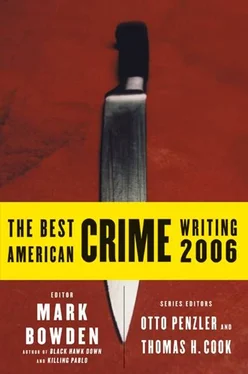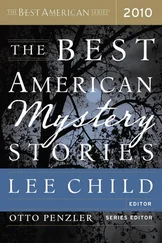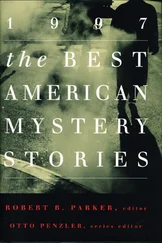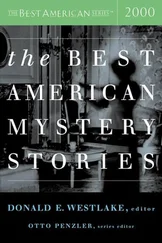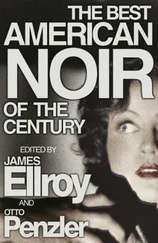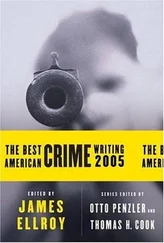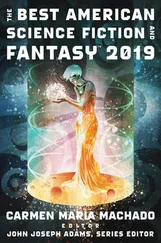As the SWAT team landed in the brush, Ruiz saw the body. "I went to listen for his carotid, and there was nothing," he says. "It looked like he took a round to the eye because it was pushed in. Then I saw that his head was flat.When I looked inside, there was no brain." The SWAT guys teared up at the sight of a fellow deputy reduced to a pile of mangled flesh. A commander told them to suck it up and someone said a prayer, and then they put a blanket over Sorensen's body lest the news media, now swarming the skies like vultures, broadcast the scene on the evening news.
"This was the most bizarre murder of a sheriff I have ever seen," recalls Detective Joe Purcell, a thirty-year veteran of the department. A vicious cop-killer with an automatic weapon was on the loose, and the search rapidly expanded beyond the sheriff's department. In 1873, the bandito Tiburcio Vasquez eluded a mounted posse in this very region for a year; two centuries later, Kueck was contending with an arsenal developed for modern warfare. A few miles away, air traffic control at Edwards-one of the world's largest Air Force bases-picked up the news and passed it on to the pilots who fly over the desert every eight minutes on maneuvers. The FBI dispatched a super-high-tech signal-tracking plane to pinpoint
Kueck if he used his cell phone, picking up his signal as it bounced off local radio towers. By the end of the afternoon, as backup poured in from other desert towns, Lake Los Angeles had become the Gaza Strip-no one was getting in or out without showing ID; every parolee in every trailer park and tattoo joint in the Antelope Valley was hauled in and questioned. Officers from all over Southern California combed Kueck's property and the surrounding desert, looking under every rock, behind every Joshua tree, deep into animal lairs and wrecked muscle cars and down ancient gullies and washes. Less than two hours after Kueck shot Sorensen, the SWAT team found his yellow Dodge Dart two and a half miles from the deputy's body. A dog from a K-9 unit picked up a scent at the car and led deputies to an abandoned shed about fifty yards away, through a dilapidated doorway, still on the scent, right to Sorensen's notebook, hat, and empty gun belt.
But if the cops thought all their manpower and technology would flush out the killer, they didn't know who they were up against. Inside Kueck's trailer, a team of criminalists found a pack rat's library of books on electronics, telescopes, aeronautics, the geology of the nearby Los Angeles Aqueduct, and time travel. Kueck's family confirmed what the evidence suggested-he was a self-taught scientist who, as one of his sisters put it, could "hook up a tin can to a cactus and power a city," a desert savant who built model rockets and talked physics with engineers at secret military test sites in his back yard, a wilderness expert who could survive in the mine shafts and buttes of the Mojave for a long time with nothing but his gun if he had to. He knew the desert's secrets and now became one himself-burrowing under a rock like one of his beloved snakes, or vanishing into one of the countless tunnels rumored to honeycomb the desert, underground hide-outs used by survivalists and meth cooks and lunatics. At one point, he told his daughter while on the run, he coiled under a piece of cardboard in a desert wash, watching the boots of his hunters as they tramped past. Kueck had studied the desert's creatures like a shaman, fascinated with the idea of shape-shifting into a coyote or bobcat or raven and then fading into the scenery until the light changed or the pact he had sealed with whatever dark force had come to an end. Even if it was only in his mind, it gave him an advantage, a mental edge. Some people know how to blend into a crowd. Kueck knew how to vanish into empty space.
Within hours, the search began to unravel.At 6:14 that evening, the dogs lost Kueck's scent. A half-hour later, the SWAT team received some disturbing information-Kueck's car was dumped a few hundred yards from Sorensen's home.They raced to the house and kicked down the door and did a room-to-room search, but no one was there. A few minutes later, they got a tip that Kueck was hiding out next to his property, on the site of the recently evicted squatter. The SWAT team tore back across the desert in off-road vehicles.When they turned the squatter's trailer upside down, they found an elaborate tunnel system, a demented leprechaun's world of canned food, a piss-stained mattress, Hustler centerfolds taped to the crumbling walls, and a cockatoo at the end of a hallway.
In 1965, after a series of cop killings in Los Angeles, the LAPD developed SWAT, the paramilitary unit quickly adopted by law enforcement everywhere. But now SWAT needed help. It was dark, and as the coroner's office finished examining Sorensen's body and hauled it away in a van, there was still no sign of Kueck. It was time for the FLIRs-forward-looking infrared thermal imaging-used by the military to target the enemy in Operation Desert Storm. Sorensen's commander, Capt. Carl Deeley, called in the U.S. Air Force. A nearby base immediately dispatched a thermal-imaging plane, which flew over the Mojave at 30,000 feet, scanning every inch of the desert floor, looking for the telltale blip of heat that would indicate a human form. A special SWAT team backed up the FLIRs, ripping across the sands on ATVs, joined by deputies on foot and horseback, and by K-9 units from three jurisdictions.
But by midnight, as the refrigeration unit in the county morgue slammed shut on Deputy Sorensen, the FLIRs had picked up nothing but coyotes and kit foxes and all manner of desert predators on the move. The cops were right back where they started-at Kueck's abandoned car in the middle of the desert. "People are creatures of habit," says Detective Paul Delhauer, a profiler with the sheriff's department. "Their personality is their fingerprint."The cops knew there was only one place Kueck would hide-right in his own back yard, the Mojave.
With every hour a criminal is on the loose, the chances of finding him diminish exponentially. By the next morning, a thousand cops and deputies had joined the manhunt. Some traversed the desert in quadrants, walking every cubic centimeter of its lonely stretches. L.A. County was sparing no expense on the search, which had morphed into exactly the kind of hydra-headed, Orwellian monster that Kueck feared-an overwhelming display of manpower, vehicles, food, searchlights, trailers, aircraft, mounted civilians, dogs, Andy Gumps, weapons, ammo, fuel, surveillance equipment, and tracking gear. At the Mount Carmel Retreat Center in Lake Los Angeles, detectives Phil Guzman and Joe Purcell approached the nuns just as morning Mass ended and asked if they could use the retreat as a staging area. The sisters readily agreed-and so followed a surreal marriage of war and peace as the SWAT team moved in with the nuns, praying with them at dawn and sharing their meals before fanning out across the desert to search for a killer.
Guzman and Purcell hoped to catch a break-maybe some desert rat would live up to the name and drop a dime on Kueck; maybe as Kueck got more desperate he'd surface somewhere. But Kueck had another edge. In his possession were his cell phone, rifle, Sorensen's gun-and the deputy's two-way radio.While on the run, he was flipping through the frequencies and paying close attention to all the police chatter.When a call went out for backup at East 200 and Palmdale Boulevard, he knew to head in the opposite direction. On another channel, he learned that Black Butte Basin Road was hot, so he backtracked.
As the heat-seeking tentacles of law enforcement continued to probe every fissure in the Antelope Valley, cops squeezed Kueck the old-fashioned way. An old mug shot had been broadcast and plastered everywhere. Kueck looked like Mephistopheles. It shocked people who knew him in the old days, when he used to look like an Eddie Bauer model, but it proved all too familiar to certain locals, who called in to report sightings of the guy with the demented gaze, the defiant Mojave ponytail and Fu Manchu, the collapsed speed-freak face-someone had seen a man running down the Southern Pacific tracks in Llano; there was a strange guy in the aqueduct at 170 Street and Highway 138; someone just stole someone else's rifle. In a furious attempt to bag the killer, cops in black-and-whites and SUVs raced all over the Mojave, only to find the sad truth of the American desert-another ex-con with no place to go, lying facedown in the sand, blasted on Yukon Jack.
Читать дальше
